East Africa’s world famous parks – Serengeti and Ngorongoro – are places you should see at least once in your life. Following a recent visit, Sam Pinnell shares her tips for sightings, pitstops and how to save money.
As avid bush lovers, iconic destinations such as Serengeti National Park and Ngorongoro Conservation Area have always been on our bucket list. But the fly-in lodge packages are way out of our, and many travellers’, league. Because we are driving through Africa, we’ve had the chance to visit these parks in our own vehicle, on a budget we can afford. A dream come true.
Having made our way into Tanzania from Zambia, we approached the Serengeti from the western border, stocking up on groceries at Mwanza. We camped at Fukufuku, 1km from the park gate. The campsite is level and immaculate. Hot water, flushing toilets and lights that work, for $10pppn.
It was one of those reality check moments as we entered Serengeti National Park. Park fees for non-residents are ridiculously expensive so you have to time your single-entry 24-hour permit carefully. We found it best to enter late morning as that gives you the afternoon, evening and following morning. Two 24-hour park fees plus camping costs us US$520. Our Hilux has a net Tare weight of 1774kgs. Vehicles over 2000kgs (they check your logbook!) pay $177 per day, so we very fortunately get away with $47! If you are planning on travelling here, you need to be aware of this.
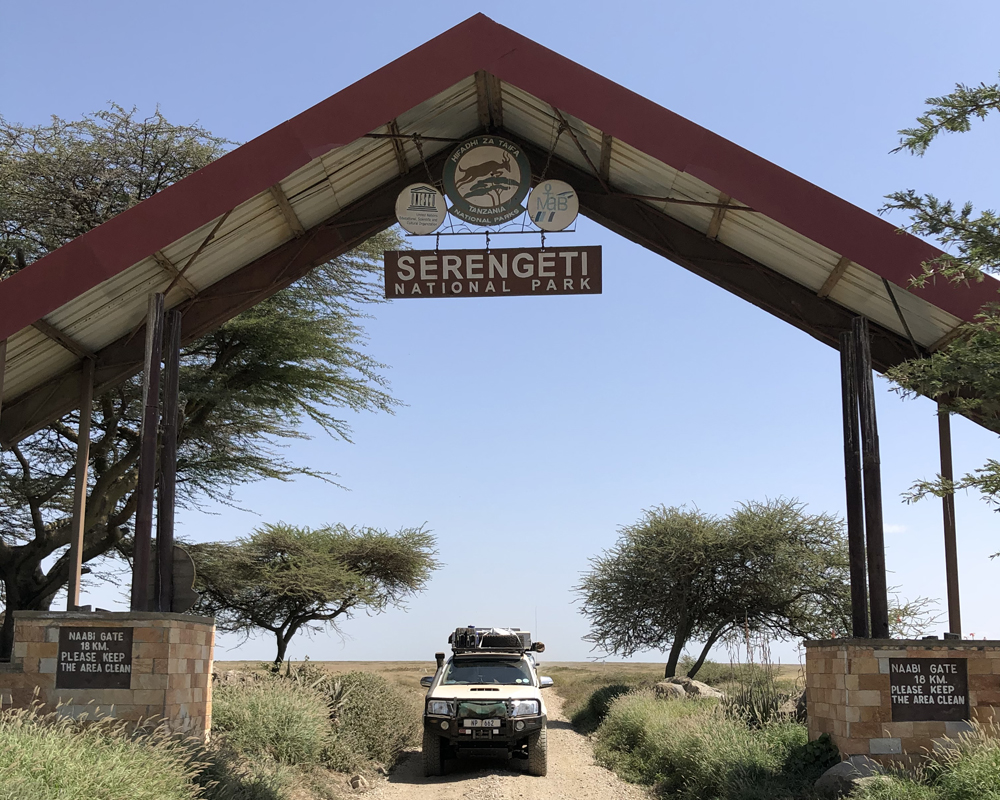
Serengeti sightings
There are plains animals everywhere. We spotted a serval hiding in the grass, then a caracal popped into the road. It was almost dark by the time we reached camp and we could hear the wildebeest snorting, hyaena and jackal calling, and lions roaring nearby. As we looked out the tent at dawn, we found a full line of migrating wildebeest going past us. There cannot be many people who have watched a migration lying in bed!

The central corridor of the Serengeti is where the majority of the wildlife is found and the public campsites are right here. There are numerous sites, but as self-sufficient campers we loved Dik-dik. It has no power so the overland groups don’t use this site – a bonus in times of Covid. When night fell, ours was the only light as far as the eye could see.
The road from Seronera to Naabi Hill Gate is badly corrugated and it was slow progress. But still, we saw a second caracal, we counted 11 lions on Simba Kopjes, and our final treat from the Serengeti was a pair of African wild cats. We made it to the gate with 10 minutes to spare. We had been warned, if you are one minute over your time you pay for a full permit again, so better to leave some margin.

Ngorongoro need to know
Even as a self-drive camping option, Ngorongoro is expensive! The crater permit costs $295 for a single entry, camping $165 per night for two people, plus park fees. Yet, again the road is an absolute shocker, deep corrugations that threaten to shake your teeth from your gums. It took us most of the day to get to the crater rim view spot. At 2,480m above sea level, it’s FREEZING so make sure you pack a good jacket! In our binoculars we saw elephant, rhino, giraffe, buffalo and loads of antelope – a teaser for the following day.
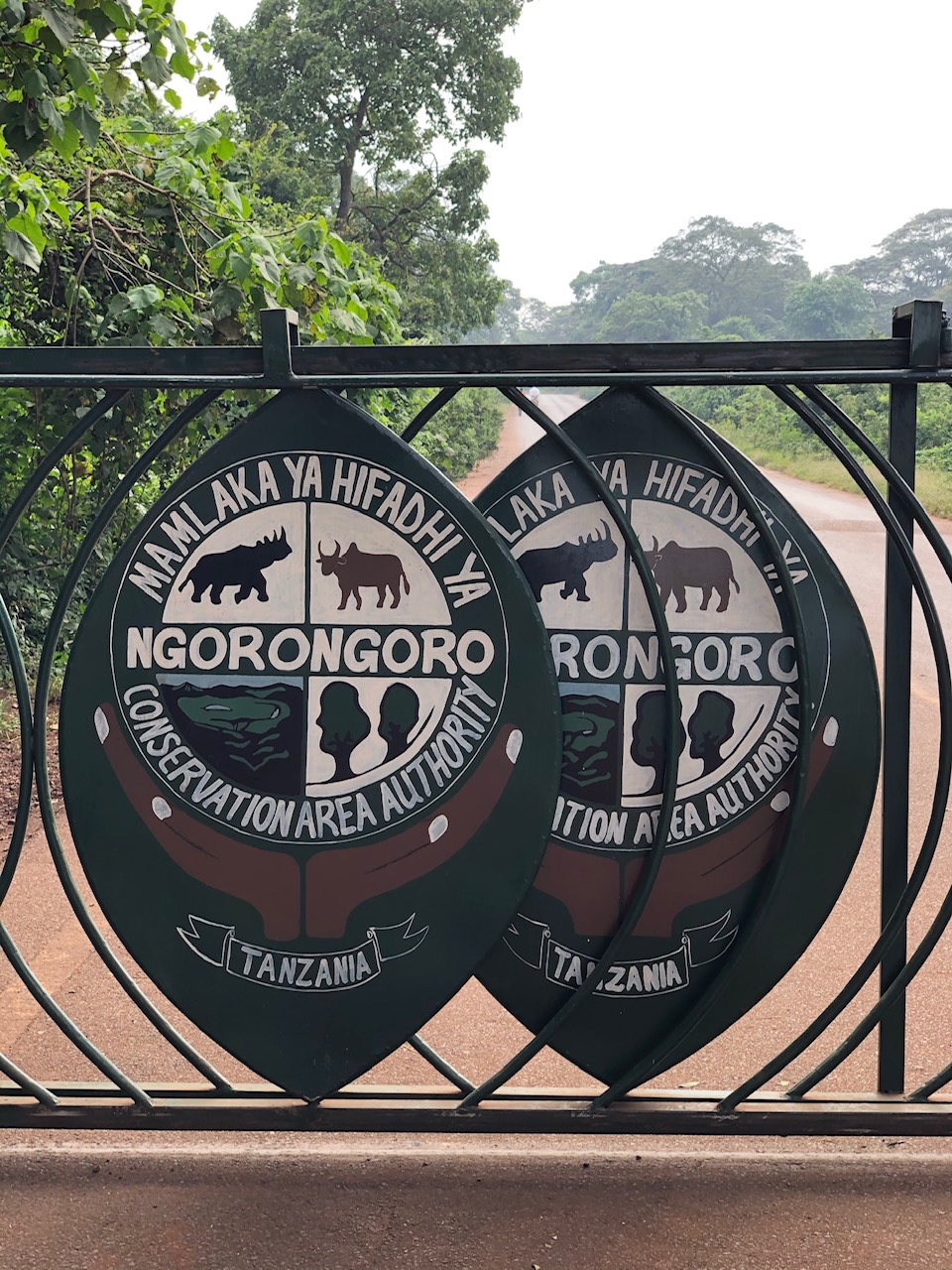
Everything we read about the crater says you cannot enter the crater without a registered guide. However, at the Naabi Hill Gate, we were told it was not necessary so don’t be conned into this by a guide touting for customers. We were the second car in line at 6am as the gate opened. Before we even reached the end of the descent road, we saw a trio of hyaenas, two jackal and a male lion on his kill. There were buffalo, zebra, wildebeest and antelope all around us and the sheer volume of game was spectacular. We spent time driving around Lake Magadi, which covers about half the crater floor, and up the Round Table hill, which gave us a good vista of the crater around us. The crater walls are some 610m high so the hippo look like dwarves against the backdrop.
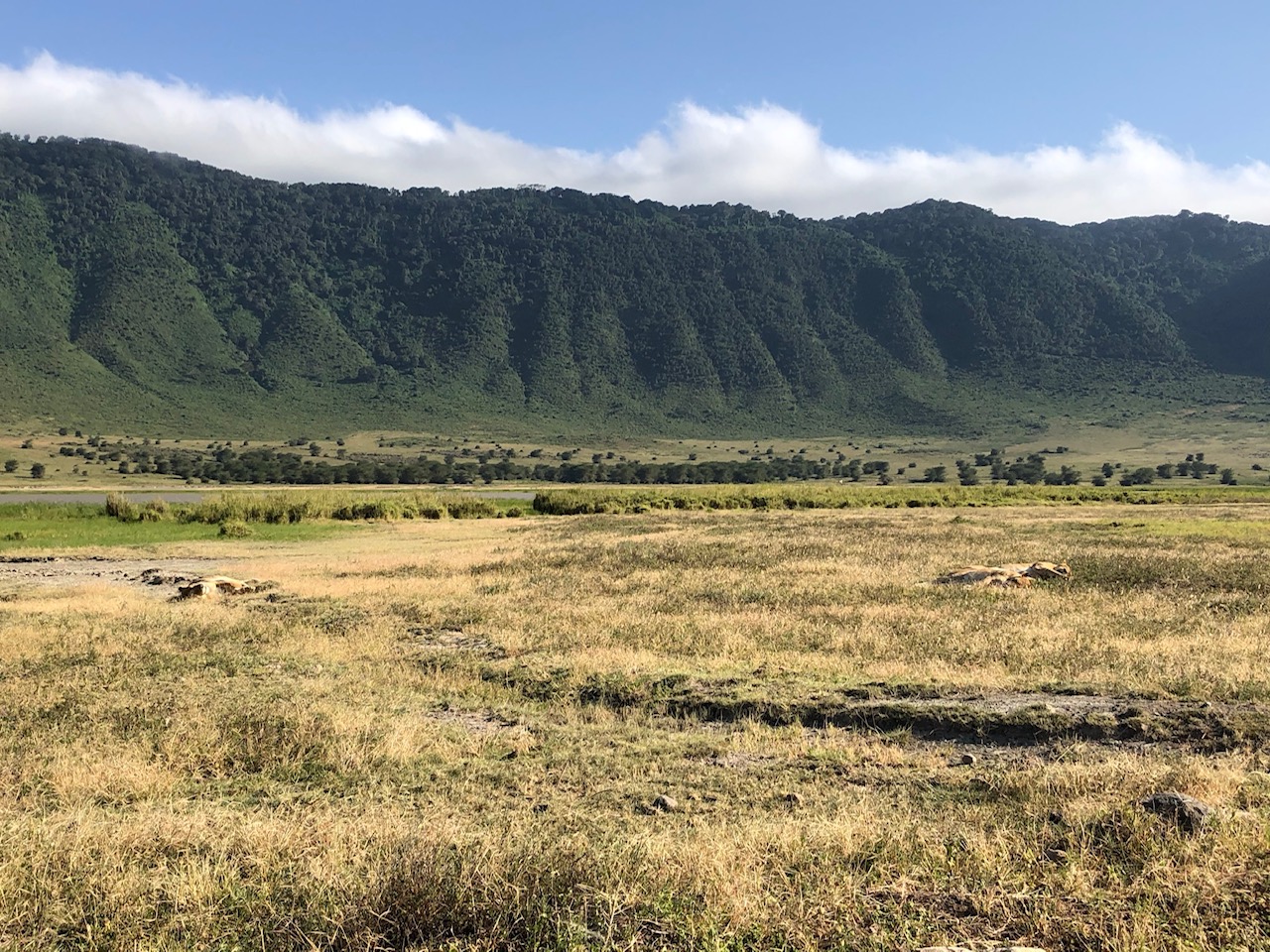
Where to eat and sleep
In the heat of the afternoon, a pride of lions chose the shade of our car. We sat for an hour, lions under our car, panting so loudly we could hear every breath. We headed for a late lunch at Ngoitokitok picnic site, an open area next to the dam. It felt surreal as we sat there: us, just normal people, making lunch in the middle of Ngorongoro Crater, fulfilling part of our dream! You don’t want to come here at lunchtime though, as every tour vehicle comes in between 12 and 2pm and it can be like Paddington Station. We spent the last hours in the forest, beautiful with the late sun.
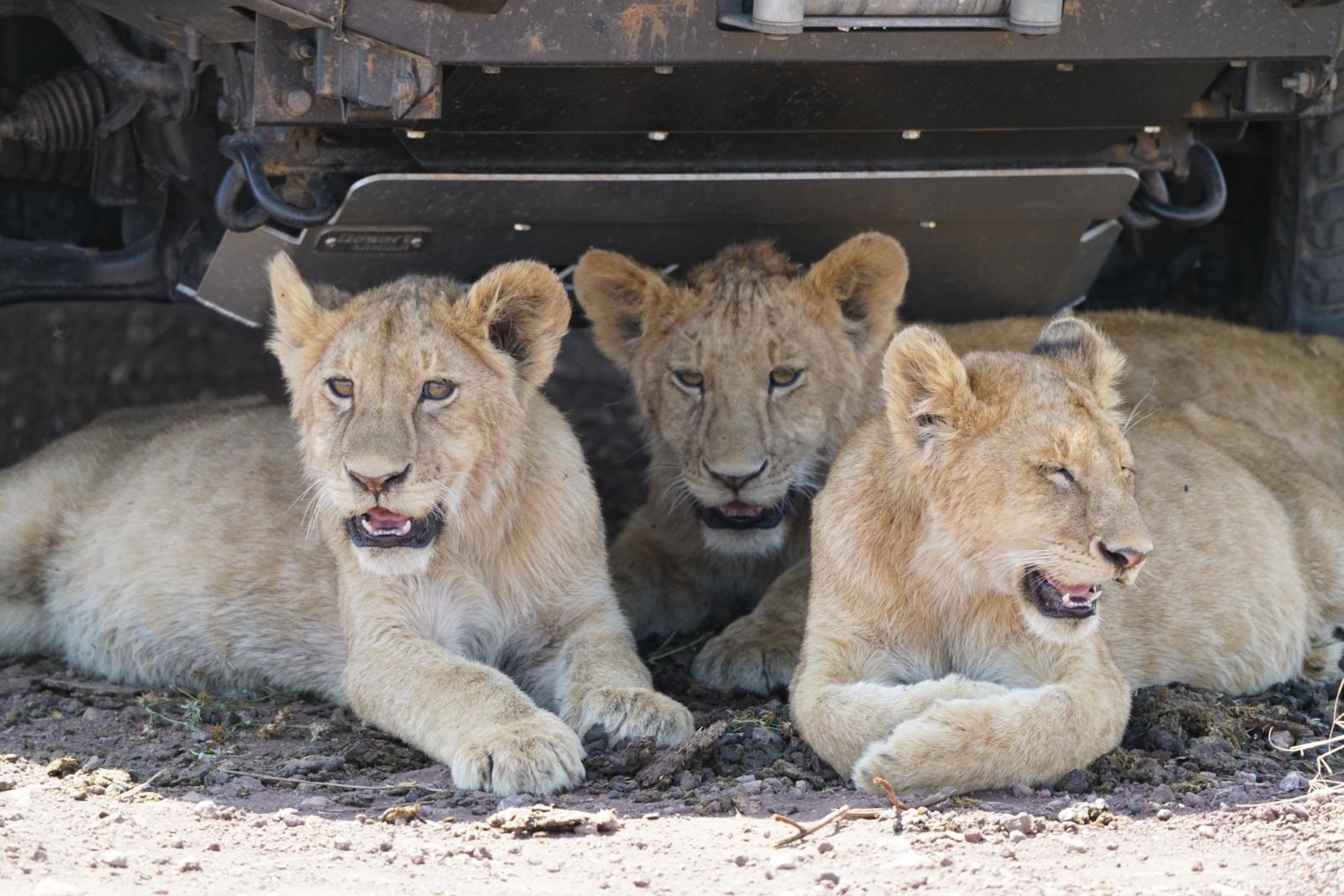

The public campsite is exorbitant and shocking. so we recommend rather staying outside the park. We chose Migombani Campsite with its rim-flow pool overlooking Lake Manyara. Its 40km from Lodoare Gate so you can still get a full day in the crater, and at $10pppn, it’s a much better and more affordable option. En route we passed the African Galleria, a huge gallery of artwork, and an excellent restaurant which serves traditional Tanzanian dishes. This is a highly recommended stop, and we found dinner here the perfect way to reflect on our two big bucket-list ticks!
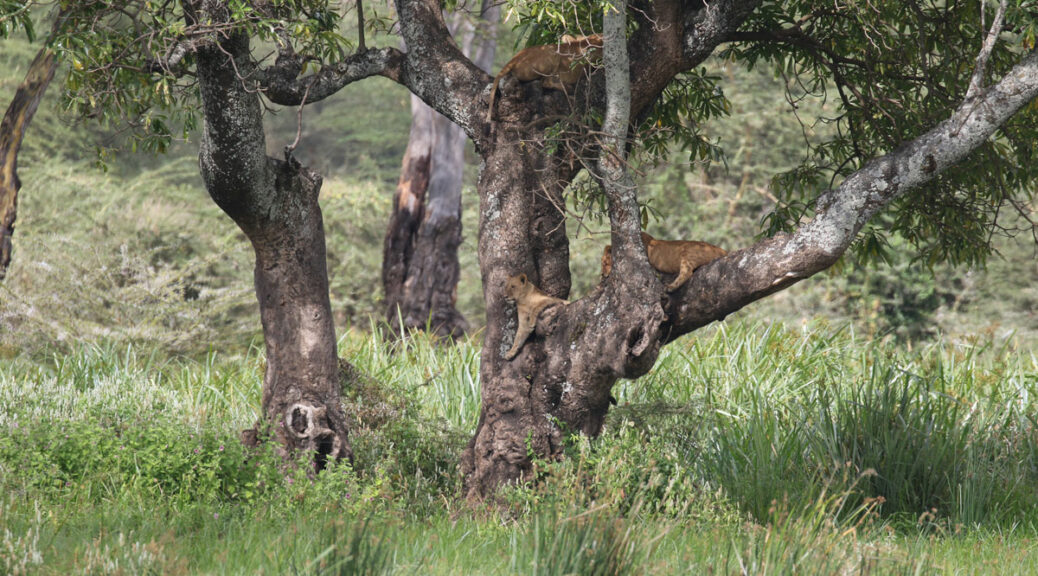

Thanks for the excellent info.
Will we be able to do the Serengeti with 4×4 caravan.
Serengeti should be doable with a 4×4 caravan, provided it is securely attached. Be prepared for roads that are badly corrugated.
Yes you definitely can do it with a 4×4 caravan
Amazing. But expensive. And thanks for the tip of getting out on time or risk paying for a full day again.
Lots of pertinent and precise information. Thanks so much Sam!
The public campsites in the Serengeti are disgusting and so are most of the park officials. Don’t go during the European summer holiday season (July/August).
Great report! Thanks for sharing. May I ask a question on how you paid the NCA fees, just with your credit card at Naabi Hill Gate or in advance as mentioned in several guides? We are starting our selfdrive Safari to Serengeti and NCA on October 30th 2021, entering Serengeti in the north at Klein’s Gate and driving south to Naabi hill and Ngorongoro. And yes, we will use Tracks4Africa!
Sam confirmed that they paid by credit card at the gate. The permit is issued once payment is processed and the time is printed on the permit.
Thanks for the information
What a pleasure to read of your experiences.